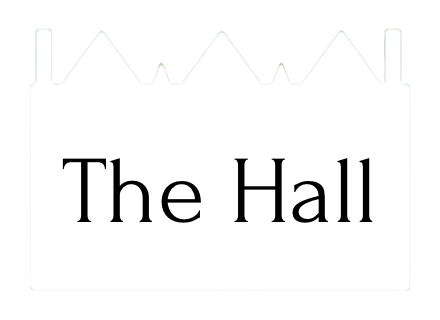THE HALL GARDENS IN THE 1850s
Bradford on Avon - 1837 Tithe Map showing Kingston House (The Hall). Click to enlarge.
The Hall is a building of imposing grandeur which rather belies its somewhat limited size; that is to say that, on looking up at the main facade and terraces The Hall appears to be much larger and more opulent than it actually is. In fact it is much more of a ‘town house’ than a stately home and for most of its history was not landed (there was no expansive estate). The grounds themselves are similarly fine in proportion, but are certainly not the vast swathes of landscape that accompany many stately homes Even so, prior to 1848 these grounds were much smaller.
The Kingston Mill and The Hall, painted by Elizabeth Tackle c. 1850. Click to enlarge.
Ashmead’s tithe map of 1837 shows Kingston House (as The Hall was then known - you can read our journal post on The Duke of Kingston’s House here) with buildings to the front and to the rear, and with separate land areas around it. The octagonal wool-drying store (now known as the Dovecote) is in area 777, whilst the large Dye House, now the site of the Dutch Garden, is in area 779. The 1830s and 1840s were dark days for the weaving industry in Bradford on Avon and many of these buildings were associated with that trade. Most were owned by Thomas Divett, a london clothier, who also owned The Hall itself. By the mid-1840s The Hall was in a state of dereliction and decay, with some rooms being used for storing wool.
The arrival of Stephen Moulton in 1848, and his subsequent restoration of The Hall, swept most of these buildings away and left The Hall standing in isolation as it does today. The Dovecote remained and was converted into a cottage for garden staff. The Dye House was not demolished until the turn of the century - it is possible that some of the stonework was used to build the new stable block.
Mrs Elizabeth Tackle painted various scenes around Bradford on Avon in the early 1850s, including this one showing the Kingston Mill (the site of Stephen Moulton’s new rubber factory), with The Hall behind it. In the distance we can also see Kingston Cottage (now The Dower House). The circular track in front of The Hall is curious; it could be seen as a carriage turn for horse-drawn carriages, but the lie of the land rising steeply upwards makes this difficult to imagine, and the main door to the house was not on this side. It may have been a garden walk, but here again the scale is unusual. No map of any date shows this path, so perhaps it is artistic licence or a prospective plan. Certainly the River Avon has benefitted from the former!
The gardens at The Hall are open throughout the summer - please see our Events Calendar for open days and other events. We look forward to meeting you.
